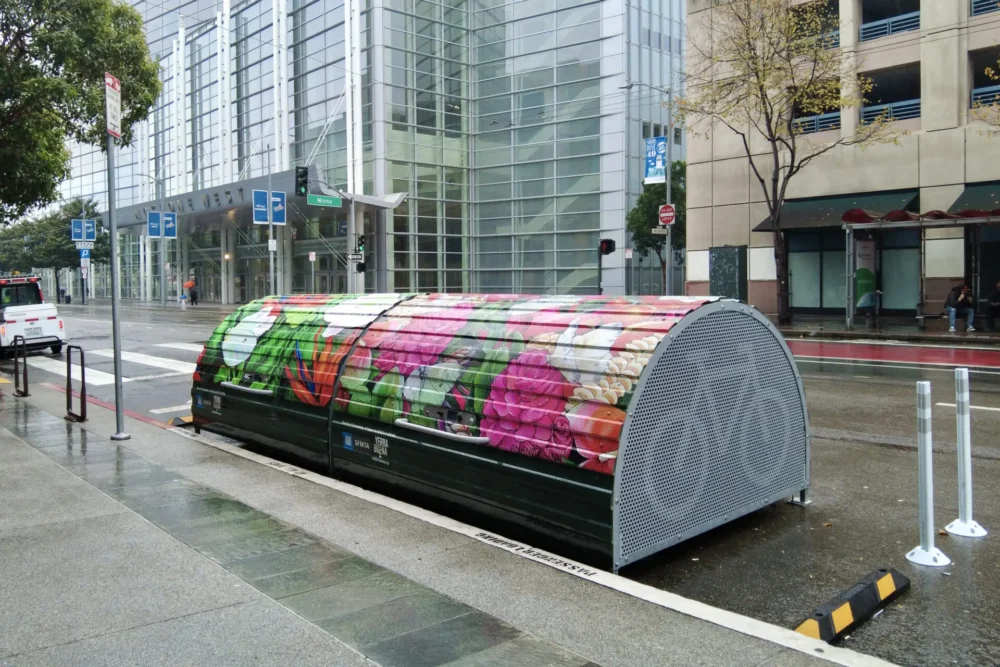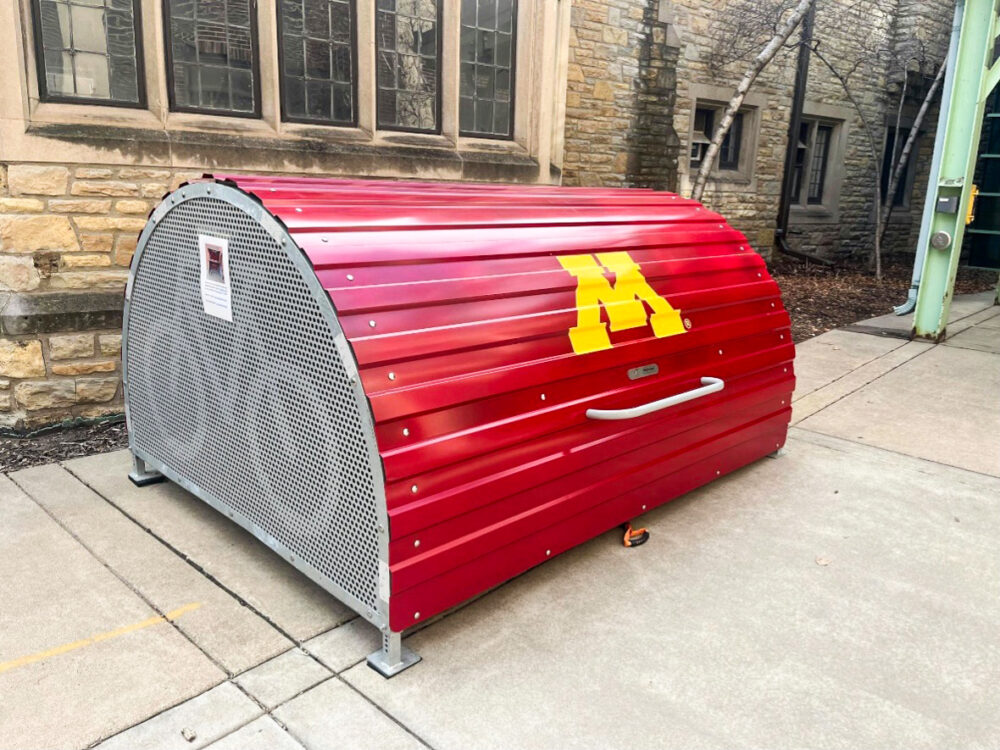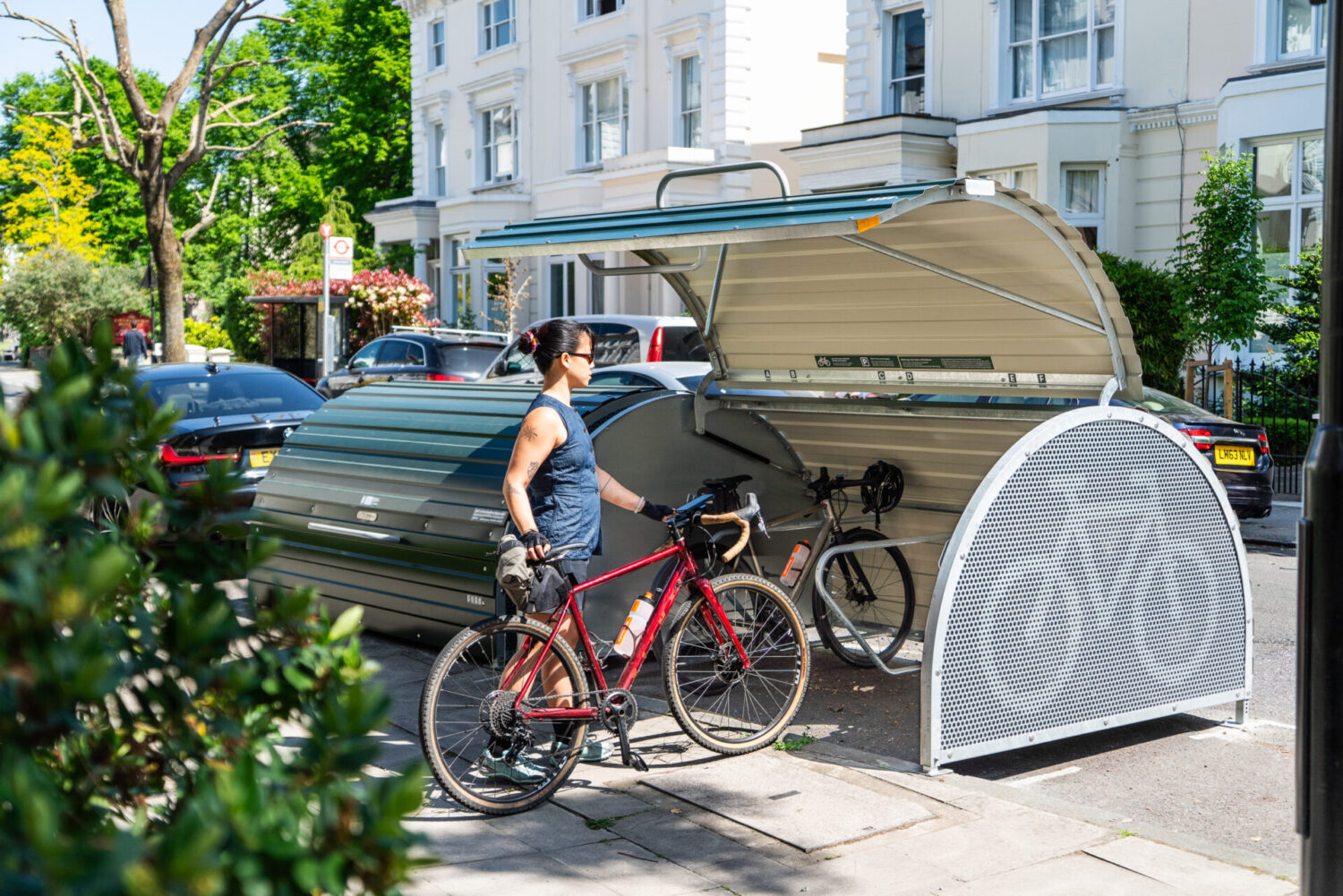The Twin Cities are consistently ranked among the best in the U.S. for cycling, with hundreds of miles of bike lanes, trails, and greenways weaving through Minneapolis and St. Paul. But even with impressive infrastructure, one major barrier continues to hold cycling back: the lack of secure cycle parking.
As reported by the Minnesota Star Tribune, local cyclists are voicing concerns that without safe, dependable places to lock their bikes, they’re often forced to leave them at home. And the data backs it up — bike theft is on the rise in Minneapolis, creating a deterrent even for the most dedicated riders.
Secure cycle parking = Confident cyclists
For many urban cyclists, the risk of theft is a deal-breaker. Without a safe place to park, trips to coffee shops, stores, or even major events like baseball games become logistical headaches. E-bikes, cargo bikes, and commuter cycles aren’t cheap—and they’re attractive targets when left on open racks or locked to street furniture. A lock alone isn’t enough in the face of increasingly brazen theft.
That’s why Minneapolis is starting to pilot new secure cycle parking solutions. The city recently partnered with us and Oonee to test out Bikehangars and bike shelters—secure, weatherproof units that offer locked, on-demand cycle parking. These installations offer a new model for urban cycling: protected infrastructure that covers the full journey, from start to finish.

From cycle lanes to Bikehangars: Supporting the full trip
Cycling infrastructure shouldn’t stop at the curb. Whether it’s a quick stop for errands or a full workday downtown, riders need to know their bikes will still be there when they return. Secure cycle parking bridges that gap. Bikehangars are a proven part of the solution:
- Sold Secure Powered Cycle and Pedal Cycle Diamond accreditation (UK)
- High quality, secure cycle parking at a low per space cost
- Six cycle parking spaces in half a car parking space
- Resistance to angle grinder attack
- Placed near businesses, transport hubs or residential blocks, they remove a common pain point and make cycling more feasible for more people.

When cycle parking feels safe, more people ride
Bike theft discourages trips that would otherwise bring people into local businesses. Cyclists are proven to spend more in shops and cafés than car drivers. But if there’s nowhere safe to park, those trips don’t happen. That’s why some Minneapolis institutions—like Target Field and the University of Minnesota—are taking matters into their own hands, offering monitored bike corrals and indoor racks.
And it doesn’t take much—just clear, visible facilities placed where people already go. Businesses that add parking information to their websites or install racks in high-visibility locations signal something simple but powerful: cyclists are welcome here.
Cyclehoop supporting secure cycling across the U.S.
At Cyclehoop, we work with cities like Minneapolis to deliver the infrastructure that helps cycling thrive. From our Bikehangars to our secure end-destination Trips app, we’re helping transform car-dominated spaces into cyclist-friendly environments—secure, connected, and accessible for all.
As Minneapolis looks for smart, cost-effective ways to deter bike theft and boost cycling, we’re proud to play a role. Because real cycling growth doesn’t come from paint on the road alone—it comes from supporting the full journey, start to stop.
Want to bring secure cycle parking to your city?
Contact us to explore tailored solutions for public spaces, business districts, and residential neighborhoods.

 Visit UK
Visit UK
